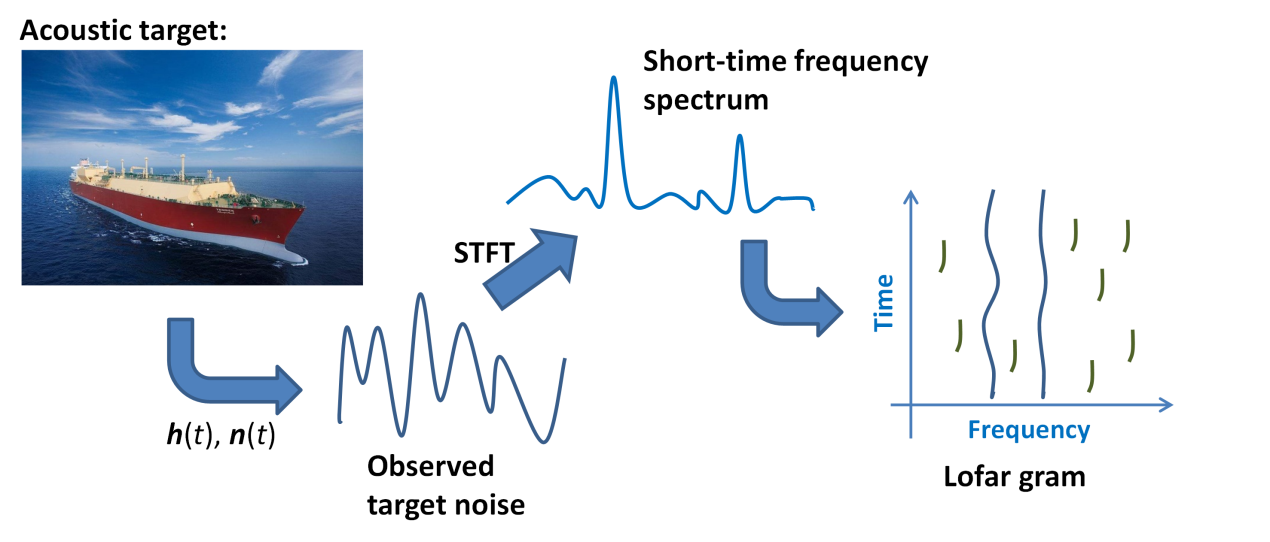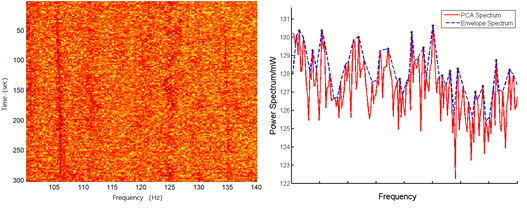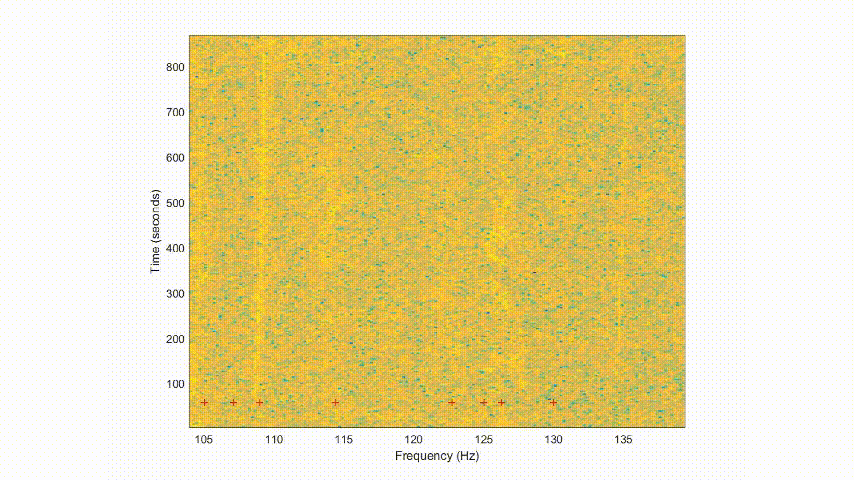Acoustic wave is the only known energy carrier available for long-distance underwater information transmission, so it is increasingly widely used in human’s ocean activities.
Recently, researchers from the Institute of Acoustics (IOA) of the Chinese Academy of Sciences, together with researchers from France, proposed a novel acoustic target feature analysis method based on image pattern recognition technique, which has been included in the proceeding of the 14th IEEE International Conference on Signal Processing (ICSP 2018). Dr. LI Chao made the presentation in the conference on behalf of the research group.
The noises of the artificial acoustic targets or marine animals usually have stable and distinguishable acoustic features, being appropriate to the passive target recognitions. Since acoustic signals are often seriously distorted by the complex marine environment, a feature extraction process must be established in real-life applications.
The most commonly used acoustic target features, including frequency spectrum, demon, phase features and so on, are formed of single-mode information under some single dimension such as time, frequency or phase, so their information is homogeneous, limiting the distinguishability of the target features.

Scheme of time-frequency analysis (Image by LI Chao)
Time-frequency analysis is a promissing signal analysis techinque, whose fundamental pricinpal is based on the Short-Time Fourier Transform (STFT). It first segments the given signal into short ones with some time interval, then computes their power spectra via Fourier Transform. Ranking these power spectra along the time axis, a low-frequency analyzing and recording gram, known as lofargram, can be obtained. Since lofargrams contain all of the time, frequency spectrum and demon information, it can be considered as a type of multiple-mode feature with inhomogeneous information, possessing greater distinguishabilities.

Lofargram examples of the artificial acoustic target (left) and whale (right) noises (Left image by CHEN Jingjun et al., Acoustics and Electronics Engineering, Issue 2, 2018 ; Right image by Douglas Gillespie, Canadian Acoustics, 2004)
Given the assumption above, researchers of IOA proposed a novel acoustic target feature analysis method based on the image pattern recognition techniques to enhance the target features on the lofargrams through analyzing the time coherence of the intstantaneous power spectra.
The simulation and sea-trial data replay experiments demonstrated that this achievement could effectively improve the reliability of the frequency line detection and tracking techniques in low SNR enviroments.

A lofargram example of the artificial acoustic target and its time-frequency feature (Image by LI Chao)

Real-time frequency line tracking results with the time-frequency features (Image by LI Chao)
References :
ZHANG Hairu, LI Chao, WANG Haibin, WANG Jun, YANG Fan. Frequency Line Extraction on Low SNR Lofargram Using Principal Component Analysis. 2018 IEEE 14th International Conference on Signal Processing (August, 2018)
Contact:
WANG Rongquan
Institute of Acoustics, Chinese Academy of Sciences, 100190 Beijing, China
E-mail: media@mail.ioa.ac.cn


